One thing I want to emphasize since I didn't in our local forecast discussion. If you are under an evacuation order in Florida, I would respect it and move farther inland if possible. Because this storm is expected to move slowly over the areas it affects. Storm surge and flooding could get dangerous even though this is on the lower end of hurricanes as far as wind speeds.
Evacuation orders for #Debby in Florida by county (as of 11:30 pm August 3). More will likely be issued or updated on Sunday as the situation evolves. #FLwx pic.twitter.com/0TRuSKy3PQ
— Craig Ceecee, Ph.D. (@CC_StormWatch) August 4, 2024
Thank you to Craig Ceecee for sharing this info about areas currently under evacuation orders. I believe in respecting them. Flooding is more of a danger than hurricane winds sometimes. Even if you choose to shelter in place, or if that is your only option, locals know ways to minimize your risk. So use your best sense and please be safe down that way. Any hurricane is worth respecting the risk, and this one looks like a slow mover. We're fortunate it was not over Gulf waters longer, but let's still respect the risks that are there. It could be worse, but this is nothing to totally blow off either.
No impacts to Alabama or Tennessee, make sure I'm clear on that too. But all kinds of people can stumble on blogs like this from anywhere.
000
WTNT34 KNHC 040532
TCPAT4
BULLETIN
Tropical Storm Debby Intermediate Advisory Number 7A
NWS National Hurricane Center Miami FL AL042024
200 AM EDT Sun Aug 04 2024
...OUTER RAINBANDS MOVING ACROSS THE LOWER FLORIDA KEYS AND
SOUTHWEST FLORIDA...
...DEBBY EXPECTED TO BECOME A HURRICANE BEFORE LANDFALL IN THE
FLORIDA BIG BEND REGION...
SUMMARY OF 200 AM EDT...0600 UTC...INFORMATION
----------------------------------------------
LOCATION...24.9N 83.9W
ABOUT 65 MI...105 KM WNW OF THE DRY TORTUGAS
ABOUT 230 MI...370 KM SSW OF TAMPA FLORIDA
MAXIMUM SUSTAINED WINDS...45 MPH...75 KM/H
PRESENT MOVEMENT...NW OR 320 DEGREES AT 14 MPH...22 KM/H
MINIMUM CENTRAL PRESSURE...1003 MB...29.62 INCHES
WATCHES AND WARNINGS
--------------------
CHANGES WITH THIS ADVISORY:
None.
SUMMARY OF WATCHES AND WARNINGS IN EFFECT:
A Storm Surge Warning is in effect for...
* Florida coast from Aripeka northward to Indian Pass
A Storm Surge Watch is in effect for...
* Florida coast from Bonita Beach northward to Aripeka, including
Tampa Bay and Charlotte Harbor
A Hurricane Warning is in effect for...
* Florida coast from the Suwannee River to the Ochlockonee River
A Hurricane Watch is in effect for...
* Florida coast west of the Ochlockonee River to Indian Pass
* Florida coast south of the Suwannee River to Yankeetown
A Tropical Storm Warning is in effect for...
* The Florida Keys west of the Seven Mile Bridge including the Dry
Tortugas
* Florida coast south of the Suwannee River to East Cape Sable
* Florida coast west of the Ochlockonee River to Indian Pass
A Tropical Storm Watch is in effect for...
* The Florida Keys north of the Seven Mile Bridge to the Channel 5
Bridge
* Florida coast west of Indian Pass to Mexico Beach
A Hurricane Warning means that hurricane conditions are expected
somewhere within the warning area. A warning is typically issued 36
hours before the anticipated first occurrence of
tropical-storm-force winds, conditions that make outside
preparations difficult or dangerous. Preparations to protect life
and property should be rushed to completion.
A Tropical Storm Warning means that tropical storm conditions are
expected somewhere within the warning area within 36 hours.
A Hurricane Watch means that hurricane conditions are possible
within the watch area. A watch is typically issued 48 hours before
the anticipated first occurrence of tropical-storm-force winds,
conditions that make outside preparations difficult or dangerous.
A Tropical Storm Watch means that tropical storm conditions are
possible within the watch area, generally within 48 hours.
A Storm Surge Warning means there is a danger of life-threatening
inundation, from rising water moving inland from the coastline,
during the next 36 hours in the indicated locations. For a
depiction of areas at risk, please see the National Weather
Service Storm Surge Watch/Warning Graphic, available at
hurricanes.gov.
This is a life-threatening situation. Persons located within these
areas should take all necessary actions to protect life and property
from rising water and the potential for other dangerous conditions.
Promptly follow evacuation and other instructions from local
officials.
A Storm Surge Watch means there is a possibility of life-
threatening inundation, from rising water moving inland from the
coastline, in the indicated locations during the next 48 hours.
For a depiction of areas at risk, please see the National Weather
Service Storm Surge Watch/Warning Graphic, available at
hurricanes.gov.
Interests elsewhere in Florida and the southeastern coast of the
United States should monitor the progress of this system.
Additional watches and warnings will likely be required later today.
For storm information specific to your area, including possible
inland watches and warnings, please monitor products issued by your
local National Weather Service forecast office.
DISCUSSION AND OUTLOOK
----------------------
At 200 AM EDT (0600 UTC), the center of Tropical Storm Debby was
located near latitude 24.9 North, longitude 83.9 West. Debby is
moving toward the northwest near 14 mph (22 km/h). A turn toward
the north is expected later today, followed by a slower motion
toward the northeast on Monday and Tuesday. On the forecast track,
the center will move across the eastern Gulf of Mexico through
tonight and reach the Florida Big Bend coast Monday morning. The
center is then expected to move slowly across northern Florida and
southern Georgia Monday and Tuesday.
Maximum sustained winds are near 45 mph (75 km/h) with higher gusts.
Strengthening is forecast, and Debby is expected to become a
hurricane by tonight before it reaches the Florida Big Bend coast.
Weakening is expected on Monday and Tuesday after Debby moves
inland.
Tropical-storm-force winds extend outward up to 140 miles (220 km)
from the center. Wind gusts of 45 mph (72 km/h) and 41 mph (67
km/h) were recently reported at Sand Key and the Key West Naval Air
Station in the Florida Keys, respectively.
The minimum central pressure is estimated to be 1003 mb (29.62
inches).
HAZARDS AFFECTING LAND
----------------------
Key messages for Debby can be found in the Tropical Cyclone
Discussion under AWIPS header MIATCDAT4 and WMO header WTNT44 KNHC.
WIND: Hurricane conditions are expected in the hurricane warning
area and possible in the hurricane watch areas on Monday, with
tropical storm conditions expected to arrive this evening.
Tropical storm conditions are expected to spread northward over the
tropical storm warning areas through tonight. Tropical storm
conditions are possible in the watch area in the Florida Keys
during the next several hours, and in the Florida Panhandle on
Monday.
STORM SURGE: The combination of storm surge and tide will cause
normally dry areas near the coast to be flooded by rising waters
moving inland from the shoreline. The water could reach the
following heights above ground somewhere in the indicated areas if
the peak surge occurs at the time of high tide...
Suwannee River to Aucilla River, FL...6-10 ft
Yankeetown to Suwannee River, FL ...4-7 ft
Aucilla River to Ochlockonee River, FL...4-6 ft
Aripeka to Yankeetown, FL...3-5 ft
Ochlockonee River to Indian Pass, FL...3-5 ft
Bonita Beach to Aripeka, FL...2-4 ft
Tampa Bay...2-4 ft
Charlotte Harbor...2-4 ft
For a complete depiction of areas at risk of storm surge inundation,
please see the National Weather Service Peak Storm Surge Graphic,
available at hurricanes.gov/graphics_at4.shtml?peakSurge.
RAINFALL: Tropical Storm Debby is expected to produce rainfall
totals of 10 to 20 inches, with maximum rainfall totals towards 30
inches, across portions of northern Florida and along the Southeast
U.S. coast through Friday morning. This rainfall will likely result
in areas of severe and widespread flash and urban flooding, with
significant river flooding expected.
For Cuba, additional rainfall amounts of 2 to 4 inches, with
localized higher amounts, will be possible through Sunday morning.
This will result in isolated to scattered areas of flooding.
For a complete depiction of forecast rainfall and flash flooding
associated with Tropical Storm Debby, please see the National
Weather Service Storm Total Rainfall Graphic, available at
hurricanes.gov/graphics_at4.shtml?rainqpf and the Flash Flood Risk
graphic at hurricanes.gov/graphics_at4.shtml?ero
For a complete depiction of forecast rainfall and flash flooding
associated with Tropical Storm Debby, please see the National
Weather Service Storm Total Rainfall Graphic, available at
hurricanes.gov/graphics_at4.shtml?rainqpf and the Flash Flood Risk
graphic at hurricanes.gov/graphics_at4.shtml?ero
TORNADOES: A tornado or two is possible across the Florida Keys and
the southern and western parts of the Florida Peninsula overnight,
expanding across much of northern and central Florida later today.
SURF: Swells generated by Debby are expected to affect much of the
Gulf coast of Florida through Monday. Swells will begin to affect
the Southeast U.S. coast on Monday and continue through the middle
of the week. These conditions are likely to cause life-threatening
surf and rip current conditions. Please consult products from your
local weather office.
NEXT ADVISORY
-------------
Next complete advisory at 500 AM EDT.
$$
Forecaster Cangialosi
794
WTNT44 KNHC 040249
TCDAT4
Tropical Storm Debby Discussion Number 7
NWS National Hurricane Center Miami FL AL042024
1100 PM EDT Sat Aug 03 2024
NOAA and Air Force Reserve Hurricane Hunter aircraft have been
investigating Debby during the past few hours and have found that
the winds have increased slightly and the central pressure has
fallen. The NOAA P-3 plane reported SFMR measurements of 35-40 kt
east of the center over the Straits of Florida, and dropsonde data
indicate that the central pressure has fallen to 1003 mb. The
initial intensity is therefore raised to 40 kt.
Debby is gradually turning toward the right and slowing down, and
the initial motion is northwestward, or 320/12 kt. A large mid- to
upper-level trough over the eastern United States has created a
break in the subtropical ridge, which will cause Debby to move
northward over the eastern Gulf of Mexico and approach the
Florida Big Bend region over the next day or two. The track
guidance is in good agreement during this period, and the NHC track
has only been shifted slightly east to account for a slight
relocation of the initial position based on the aircraft data.
After 2-3 days, the steering currents around Debby collapse, and
the cyclone is expected to creep northeastward at less than 5 kt
across northern Florida to near the coasts of Georgia and South
Carolina by day 5. While there is model disagreement on exactly
where Debby will end up on day 5, there is high confidence that the
storm will not be moving very fast, and this slow motion will have
major implications for the associated hazards, particularly heavy
rainfall and flooding.
Low vertical shear and very warm waters (as warm as 32 degrees
Celsius within Apalachee Bay) are likely to support additional
strengthening while Debby approaches the Florida Big Bend. The
intensity guidance has increased a bit on this cycle. Most of the
regional hurricane models are showing Debby reaching hurricane
strength before it reaches the coast, while the
statistical-dynamical SHIPS and LGEM models have increased to the
75-80-kt range. In addition, the Rapid Intensification indices are
showing a 1-in-3 chance of a 45-kt increase in intensity over the
next 36 hours. Based on these model data, the NHC intensity
forecast has been increased to 75 kt in 36 hours, just before the
center of Debby is expected to reach the coast. Weakening is
anticipated after landfall, but Debby's intensity on days 3 through
5 is highly uncertain and is dependent on whether the center moves
over the Atlantic waters and for how long.
Key Messages:
1. Heavy rainfall will likely result in considerable flash and urban
flooding across portions of Florida and the coastal areas of the
Southeast through Thursday. Significant river flooding is also
expected.
2. Hurricane conditions are expected on Monday along portions of
the Florida Big Bend region where a Hurricane Warning is in effect,
with tropical storm conditions beginning late Sunday. Tropical storm
conditions are expected through Monday farther south within the
Tropical Storm Warning along Florida's west coast, including the
Tampa Bay area and the Lower Florida Keys.
3. There is a danger of life-threatening storm surge inundation
along portions of the Gulf coast of Florida from Aripeka to Indian
Pass. Life-threatening storm surge is possible south of Aripeka to
Bonita Beach, including Tampa Bay and Charlotte Harbor.
4. Impacts from storm surge, strong winds, and heavy rains are
possible elsewhere in Florida and along the southeast coast of the
United States from Georgia to North Carolina through the middle of
next week, and interests in those areas should continue to monitor
the progress of this system. Additional watches and warnings will
likely be required on Sunday.
FORECAST POSITIONS AND MAX WINDS
INIT 04/0300Z 24.4N 83.6W 40 KT 45 MPH
12H 04/1200Z 25.9N 84.2W 50 KT 60 MPH
24H 05/0000Z 27.8N 84.3W 60 KT 70 MPH
36H 05/1200Z 29.3N 84.0W 75 KT 85 MPH
48H 06/0000Z 30.3N 83.3W 55 KT 65 MPH...INLAND
60H 06/1200Z 31.0N 82.4W 40 KT 45 MPH...INLAND
72H 07/0000Z 31.2N 81.5W 40 KT 45 MPH...INLAND
96H 08/0000Z 31.6N 80.2W 45 KT 50 MPH...OVER WATER
120H 09/0000Z 33.0N 80.5W 40 KT 45 MPH...INLAND
$$
Forecaster Berg
827
WTNT54 KNHC 040251
TDSAT4
Tormenta Tropical Debby Discusión Número 7
Centro Nacional de Huracanes del SNM Miami FL AL042024
1100 PM EDT sábado 03 de agosto de 2024
Los aviones Cazahuracán de la Reserva de la Fuerza Aérea y de la
NOAA han estado investigando Debby durante las últimas horas y han
encontrado que los vientos han aumentado ligeramente y la presión
central ha caído. El avión de la NOAA P-3 informó mediciones de SFMR
de 35-40 kt al este del centro sobre el Estrecho de Florida, y los
datos de sondas gota indican que la presión central ha caído a 1003
mb. Por lo tanto, la intensidad inicial se eleva a 40 kt.
Debby está girando gradualmente hacia la derecha y disminuyendo la
velocidad, y el movimiento inicial es hacia el noroeste, o 320/12
kt. Una gran depresión de nivel medio a superior sobre el este de
Estados Unidos ha creado una rotura en la cresta subtropical, lo que
hará que Debby se mueva hacia el norte sobre el este del Golfo de
México y se acerque a la región de Big Bend de Florida durante el
próximo día o dos. La guía de trayectoria está en buen acuerdo
durante este período, y la trayectoria del CNH solo se ha desplazado
ligeramente al este para tener en cuenta una ligera reubicación de
la posición inicial basada en los datos de la aeronave. Después de
2-3 días, las corrientes directivas alrededor de Debby colapsan, y
se espera que el ciclón se arrastre hacia el noreste a menos de 5 kt
a través del norte de Florida hasta cerca de las costas de Georgia y
Carolina del Sur para el día 5. Si bien existe un desacuerdo modelo
sobre dónde exactamente terminará Debby el día 5, hay una alta
confianza en que la tormenta no se moverá muy rápido, y esta cámara
lenta tendrá importantes implicaciones para los peligros associados,
particularmente las fuertes lluvias e inundaciones.
Es probable que la baja cizalladura vertical y las aguas muy cálidas
(tan cálidas como 32 grados Celsius dentro de Apalachee Bay) apoyen
un fortalecimiento adicional mientras Debby se acerca al Big Bend de
Florida. La guía de intensidad ha aumentado un poco en este ciclo.
La mayoría de los modelos de huracán regionales están mostrando que
Debby alcanza la fuerza de huracán antes de que alcance la costa,
mientras que los modelos estadísticos y dinámicos de SHIPS y LGEM
han aumentado al rango de 75-80-kt. Además, los índices de
intensificación rápida están mostrando una probabilidad de 1 en 3 de
un aumento de 45-kt en la intensidad durante las próximas 36 horas.
Basado en estos datos de modelo, el pronóstico de intensidad del CNH
se ha aumentado a 75 kt en 36 horas, justo antes de que el centro de
Debby alcance la costa. Se anticipa un debilitamiento después de
tocar tierra, pero la intensidad de Debby en los días 3 al 5 es
altamente incierta y depende de si el centro se mueve sobre las
aguas del Atlántico y durante cuánto tiempo.
Mensajes Clave:
1. Las fuertes lluvias probablemente resultarán en considerables
inundaciones repentinas y urbanas a través de porciones de Florida y
las áreas costeras del sureste hasta el jueves. También se esperan
inundaciones significativas en el río.
2. Se esperan condiciones de huracán el lunes a lo largo de
porciones de la región de Big Bend de Florida donde un Aviso de
Huracán está en efecto, con condiciones de tormenta tropical a
partir del domingo por la noche. Se esperan condiciones de tormenta
tropical hasta el lunes más al sur dentro del Aviso de Tormenta
Tropical a lo largo de la costa oeste de Florida, incluyendo el área
de Tampa Bay y los Cayos del Bajo de Florida.
3. Hay un peligro de inundación de marejada ciclónica que amenaza la
vida a lo largo de porciones de la costa del Golfo de Florida desde
Aripeka a Indian Pass. Es posible una marejada ciclónica que amenaza
la vida al sur de Aripeka a Bonita Beach, incluyendo Tampa Bay y
Charlotte Harbor.
4. Son posibles los impactos de la marejada ciclónica, vientos
fuertes y fuertes lluvias en otro lugar de Florida y a lo largo de
la costa sureste de los Estados Unidos desde Georgia a Carolina del
Norte hasta mediados de la próxima semana, y los intereses en esas
áreas deben continuar monitoreando el progreso de este sistema. Es
probable que se requieran vigilancias y avisos adicionales el
domingo.
POSICIONES DE PRONÓSTICO Y VIENTOS MÁXIMOS
INIT 04/0300Z 24.4N 83.6W 40 KT 45 MPH
12H 04/1200Z 25.9N 84.2W 50 KT 60 MPH
24H 05/00Z 27.8N 84.3W 60 KT 70 MPH
36H 05/1200Z 29.3N 84.0W 75 KT 85 MPH
48H 06/00Z 30.3N 83.3W 55 KT 65 MPH...INTERIOR
60H 06/1200Z 31.0N 82.4W 40 KT 45 MPH...INTERIOR
72H 07/00Z 31.2N 81.5W 40 KT 45 MPH...INTERIOR
96H 08/00Z 31.6N 80.2W 45 KT 50 MPH...SOBRE EL AGUA
120H 09/00Z 33.0N 80.5W 40 KT 45 MPH...INLAND
$$
Pronosticador Berg
*** Este producto ha sido procesado automáticamente utilizando un
programa de traducción y puede contener omisiones y errores. El
Servicio Nacional de Meteorología no puede garantizar la precisión
del texto convertido. De haber alguna duda, el texto en inglés es
siempre la versión autorizada. ***
750
WTCA44 KNHC 040533
TASAT4
BOLETÍN
Tormenta Tropical Debby Advertencia Intermedia Número 7A
Centro Nacional de Huracanes del SNM Miami FL AL042024
200 AM EDT domingo 04 de agosto de 2024
...BANDAS DE LLUVIA EXTERIOR QUE SE MUEVEN A TRAVÉS DE LOS BAJOS
CAVIOS DE FLORIDA Y EL SUROESTE DE FLORIDA...
...SE ESPERA QUE DEBBY SE CONVIERTA EN UN HURACÁN ANTES DE TOCAR
TIERRA EN LA REGIÓN DE BIG BEND DE FLORIDA...
RESUMEN DE 200 AM EDT...0600 UTC...INFORMACIÓN
----------------------------------------------
UBICACIÓN...24.9N 83.9W
ALREDEDOR 65 MI...105 KM AL NORO DE LA TORTUGAS SECA
ALREDEDOR 230 MI...370 KM SSW DE TAMPA FLORIDA
VIENTOS MÁXIMOS SOSTENIDOS...45 MPH...75 KM/H
MOVIMIENTO ACTUAL...NO O 320 GRADOS A 14 MPH...22 KM/H
PRESIÓN CENTRAL MÍNIMA...1003 MB...29.62 PULGADAS
VIGILANCIAS Y AVISOS
--------------------
CAMBIOS CON ESTA ADVERTENCIA:
Ninguno.
RESUMEN DE VIGILANCIAS Y AVISOS EN EFECTO:
Un Aviso de Marejada Ciclónica está en efecto para...
* Costa de Florida desde Aripeka hacia el norte hasta Indian Pass
Una Vigilancia de Marejada Ciclónica está en efecto para...
* Costa de Florida desde Bonita Beach hacia el norte hasta Aripeka,
incluyendo Tampa Bay y Charlotte Harbor
Un Aviso de Huracán está en efecto para...
* Costa de Florida desde el Río Suwannee hasta el Río Ochlockonee
Una Vigilancia de Huracán está en efecto para...
* Costa de Florida al oeste del Río Ochlockonee hasta Indian Pass
* Costa de Florida al sur del Río Suwannee a Yankeetown
Un Aviso de Tormenta Tropical está en efecto para...
* Los Cayos de Florida al oeste del Puente de las Siete Millas
incluyendo los Dry Tortugas
* Costa de Florida al sur del Río Suwannee hasta East Cape Sable
* Costa de Florida al oeste del Río Ochlockonee hasta Indian Pass
Una Vigilancia de Tormenta Tropical está en efecto para...
* Los Cayos de Florida al norte del Puente de las Siete Millas hasta
el Puente del Canal 5
* Costa de Florida al oeste de Indian Pass a Mexico Beach
Un Aviso de Huracán significa que se esperan condiciones de huracán
en algún lugar dentro del área bajo aviso. Un aviso se emite
típicamente 36 horas antes de la primera ocurrencia anticipada de
vientos con fuerza de tormenta tropical, condiciones que hacen los
preparativos exteriores difíciles o peligrosos. Los preparativos
para proteger la vida y la propiedad deben apresurarse hasta su
finalización.
Un Aviso de Tormenta Tropical significa que se esperan condiciones
de tormenta tropical en algún lugar dentro del área de aviso dentro
de 36 horas.
Una Vigilancia de Huracán significa que son posibles las condiciones
de huracán dentro del área de vigilancia. Una vigilancia se emite
típicamente 48 horas antes de la primera ocurrencia anticipada de
vientos con fuerza de tormenta tropical, condiciones que hacen los
preparativos exteriores difíciles o peligrosos.
Una Vigilancia de Tormenta Tropical significa que son posibles las
condiciones de tormenta tropical dentro del área de vigilancia,
generalmente dentro de 48 horas.
Un Aviso de Marejada Ciclónica significa que hay un peligro de
inundación que amenaza la vida, por el aumento del agua que se mueve
tierra adentro desde la costa, durante las próximas 36 horas en los
lugares indicados. Para una representación de áreas en riesgo, por
favor vea el Gráfico de Vigilancia/Aviso de Marejada Ciclónica del
Servicio Nacional de Meteorología, disponible en hurricanes.gov.
Esta es una situación que amenaza la vida. Las personas ubicadas
dentro de estas áreas deben tomar todas las medidas necesarias para
proteger la vida y la propiedad de la elevación del agua y la
posibilidad de otras condiciones peligrosas. Siga rápidamente la
evacuación y otras instrucciones de los funcionarios locales.
Una Vigilancia de Marejada Ciclónica significa que hay una
posibilidad de vida-
inundación amenazante, por la elevación del agua que se mueve tierra
adentro desde el
costa, en los lugares indicados durante las próximas 48 horas.
Para una representación de áreas en riesgo, por favor vea el Tiempo
Nacional
Gráfico de Vigilancia/Aviso de Marejada Ciclónica de Servicio,
disponible en
hurricanes.gov.
Intereses en otro lugar en Florida y la costa sureste de los Estados
Unidos deben monitorear el progreso de este sistema. Es probable que
se requieran vigilancias y avisos adicionales más tarde hoy.
Para información de la tormenta específica en su área, incluyendo
posibles vigilancias y avisos tierra adentro, por favor monitoree
los productos emitidos por su oficina de pronóstico del Servicio
Nacional de Meteorología local.
DISCUSIÓN Y PERSPECTIVAS
----------------------
A las 200 AM EDT (0600 UTC), el centro de la Tormenta Tropical Debby
se localizó cerca de la latitud 24.9 Norte, longitud 83.9 Oeste.
Debby se está moviendo hacia el noroeste cerca de 14 mph (22 km/h).
Se espera un giro hacia el norte más tarde hoy, seguido de un
movimiento más lento hacia el noreste el lunes y el martes. En la
trayectoria del pronóstico, el centro se moverá a través del este
del Golfo de México hasta esta noche y alcanzará la costa de Big
Bend de Florida el lunes por la mañana. Luego se espera que el
centro se mueva lentamente a través del norte de Florida y el sur de
Georgia el lunes y el martes.
Los vientos máximos sostenidos están cerca de 45 mph (75 km/h) con
ráfagas más fuertes. Se pronostica un fortalecimiento y se espera
que Debby se convierta en huracán esta noche antes de que alcance la
costa de Big Bend de Florida. Se espera un debilitamiento el lunes
y el martes después de que Debby se mueva tierra adentro.
Vientos con fuerza de tormenta tropical se extienden hacia fuera
hasta 140 millas (220 km) desde el centro. Recientemente se
informaron ráfagas de viento de 45 mph (72 km/h) y 41 mph (67 km/h)
en Sand Key y la Estación Aérea Naval de Key West en los Cayos de
Florida, respectivamente.
Se estima que la presión central mínima es de 1003 mb (29.62
pulgadas).
PELIGROS AFECTANDO TIERRA
----------------------
Mensajes clave para Debby se pueden encontrar en el Ciclón Tropical
Discusión bajo el encabezado de AWIPS MIATCDAT4 y el encabezado de
la OMM WTNT44 KNHC.
VIENTO: Se esperan condiciones de huracán en el área de aviso de
huracán y es posible en las áreas de vigilancia de huracán el lunes,
con las condiciones de tormenta tropical que llegarán esta noche. Se
espera que las condiciones de tormenta tropical se extiendan hacia
el norte sobre las áreas de aviso de tormenta tropical hasta esta
noche. Son posibles las condiciones de tormenta tropical en el área
de vigilancia en los Cayos de Florida durante las próximas horas, y
en el Panhandle de Florida el lunes.
MAREJADA CICLÓNICA: La combinación de marejada ciclónica y la
marejada causará que las áreas normalmente secas cerca de la costa
se inunden por las aguas ascendentes que se mueven tierra adentro
desde la costa. El agua podría alcanzar las siguientes alturas por
encima del suelo en algún lugar en las áreas indicadas si la
marejada máxima ocurre en el momento de la marea alta...
Suwannee River a Aucilla River, FL...6-10 pies Yankeetown a Suwannee
River, FL...4-7 pies Aucilla River a Ochlockonee River, FL...4-6
pies Aripeka a Yankeetown, FL...3-5 pies Ochlockonee River a Indian
Pass, FL...3-5 pies Bonita Beach a Aripeka, FL...2-4 pies Tampa
Bay...2-4 pies Charlotte Harbor...2-4 pies Suwannee River
Para una representación completa de áreas en riesgo de inundación de
marejada ciclónica, por favor vea el Gráfico de Marejada Creciente
del Servicio Nacional de Meteorología, disponible en
hurricanes.gov/graphics_at4.shtml?peakSurge.
LLUVIA: Se espera que la Tormenta Tropical Debby produzca totales de
lluvia de 10 a 20 pulgadas, con totales de lluvia máximas hacia 30
pulgadas, a través de porciones del norte de Florida y a lo largo de
la costa sureste de Estados Unidos hasta el viernes por la
mañana.Esta lluvia probablemente resultará en áreas de inundaciones
repentinas y urbanas severas y generalizadas, con se esperan
inundaciones significativas en los ríos.
Para Cuba, serán posibles cantidades de lluvia adicionales de 2 a 4
pulgadas, con cantidades más altas localizadas, hasta el domingo por
la mañana. Esto resultará en áreas aisladas a desdibujadas por
inundaciones.
Para una representación completa del pronóstico de lluvia e
inundaciones repentinas associadas con la Tormenta Tropical Debby,
por favor vea el Gráfico de Lluvia Total de Tormenta del Servicio
Nacional de Meteorología, disponible en
hurricanes.gov/graphics_at4.shtml?rainqpf y el gráfico de Riesgo de
Inundaciones Repentinas en hurricanes.gov/graphics_at4.shtml? ero
Para una representación completa del pronóstico de lluvia e
inundaciones repentinas associadas con la Tormenta Tropical Debby,
por favor vea el Gráfico de Lluvia Total de Tormenta del Servicio
Nacional de Meteorología, disponible en
hurricanes.gov/graphics_at4.shtml?rainqpf y el gráfico de Riesgo de
Inundaciones Repentinas en hurricanes.gov/graphics_at4.shtml? ero
TORNADOS: Es posible un tornado o dos a través de los Cayos de
Florida y las partes sur y oeste de la Península de Florida durante
la noche, expandiéndose a través de gran parte del norte y el centro
de Florida más tarde hoy.
OLEAJE: Se espera que las marejadas generadas por Debby afecten gran
parte de la costa del Golfo de Florida hasta el lunes. Las marejadas
comenzarán a afectar la costa sureste de Estados Unidos el lunes y
continuarán hasta mediados de la semana.Estas condiciones son
propensas a causar condiciones de oleaje y corrientes marinas que
amenazan la vida. Por favor, consulte los productos de su oficina
meteorológica local.
PRÓXIMA ADVERTENCIA
-------------
Próxima advertencia completa a las 500 AM EDT.
$$
Pronosticador Cangialosi
*** Este producto ha sido procesado automáticamente utilizando un
programa de traducción y puede contener omisiones y errores. El
Servicio Nacional de Meteorología no puede garantizar la precisión
del texto convertido. De haber alguna duda, el texto en inglés es
siempre la versión autorizada. ***
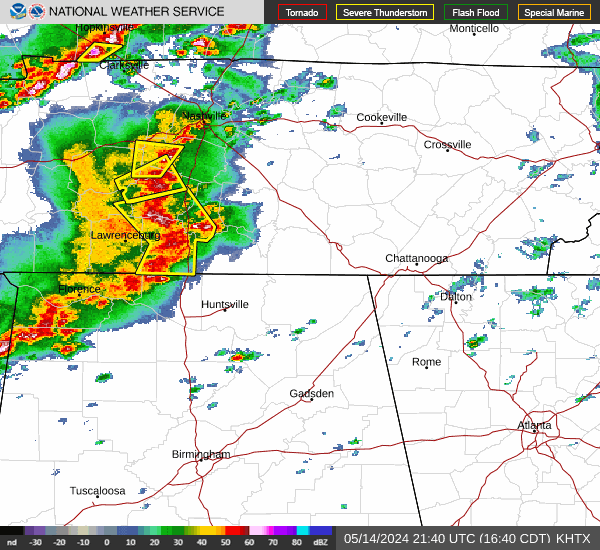
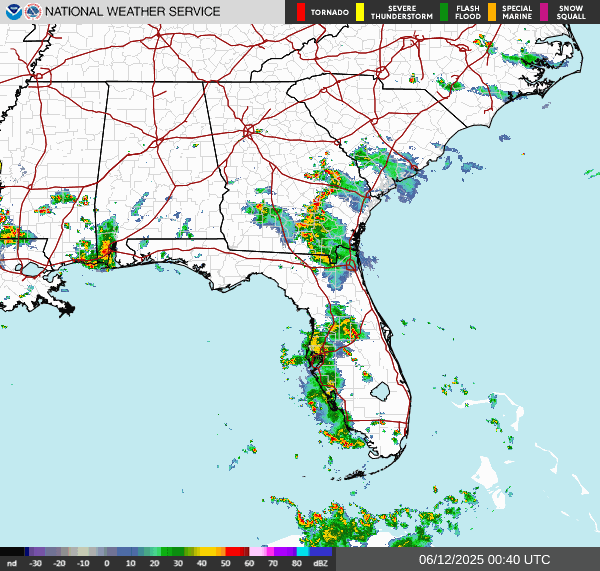


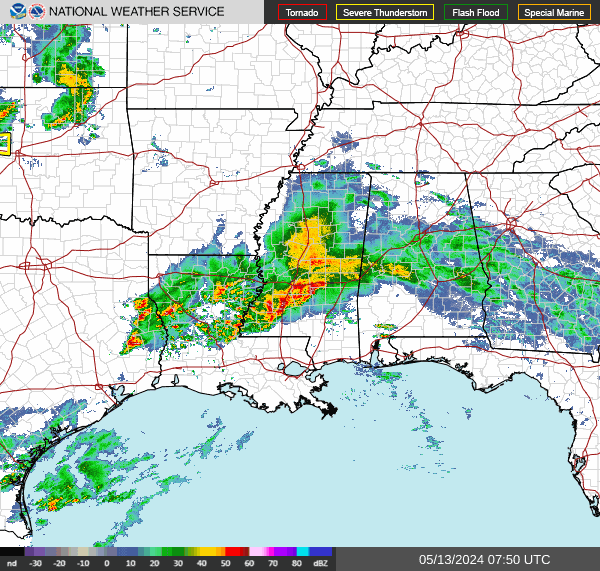
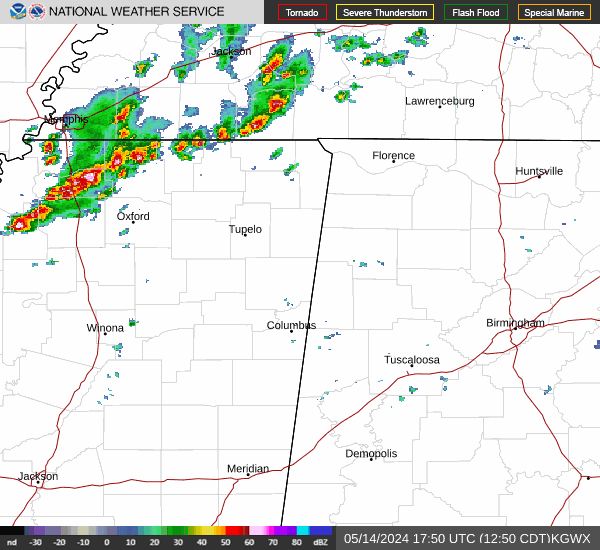
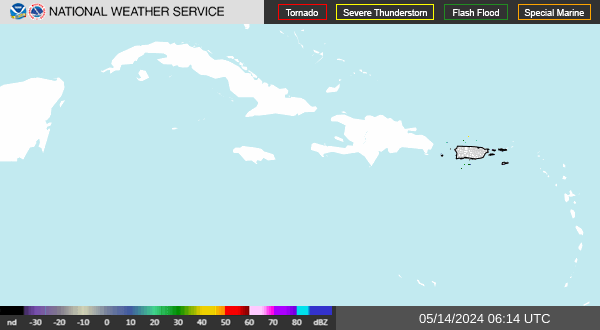



No comments:
Post a Comment